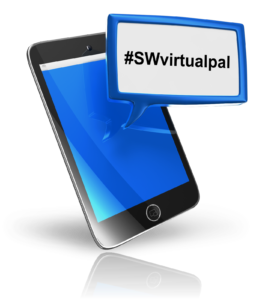Review of Teaching & Learning in Social Work Blog Posts for 2016
 The end of a year is a natural time for reflection, and this year I offer a review of all the posts that appeared on Teaching & Learning in Social Work Education during 2016. My goal for this blog is to write or publish at least two posts a month, which happened more months than not. I also recruited other social work educators to write about their own experiences in the classroom or with scholarship, and also write about about all of my presentations, either at conferences or as a part of a workshop. This year, I published a total of 25 blog posts, representing work with numerous collaborators and good colleagues. Below is a list of this year’s post grouped around the topics of assignments, projects, guest educator posts, and conference presentations.
The end of a year is a natural time for reflection, and this year I offer a review of all the posts that appeared on Teaching & Learning in Social Work Education during 2016. My goal for this blog is to write or publish at least two posts a month, which happened more months than not. I also recruited other social work educators to write about their own experiences in the classroom or with scholarship, and also write about about all of my presentations, either at conferences or as a part of a workshop. This year, I published a total of 25 blog posts, representing work with numerous collaborators and good colleagues. Below is a list of this year’s post grouped around the topics of assignments, projects, guest educator posts, and conference presentations.
Assignments: These blog posts provide information, how-to tips, and ideas about different types of technology-based assignments for the social work classroom:
– Job Shadowing on Twitter with Joy Jones on 1/8/16
– Tweet, Tweet!: Using Live Twitter Chats in Social Work on Education with Dr. Jimmy Young on 1/29/16
– Using #MacroSW in the Classroom with the @OfficialMacroSW Partners on 3/14/16
– Using Pinterest in Undergraduate Social Work Education – #BPDTX16 with Dr. Lisa Baker on 3/31/16
– Revised Technology-Based Learning Task List for Social Work Education with Drs. Melanie Sage and Nancy J. Smyth on 6/13/16
Social Work Educator’s Guide for #SWVirtualPal
This guide to explains the hashtag #SWVirtualPal and how you might incorporate it into course content, a class assignment or learning activity. You can also download a PDF version of this guide.
The purpose of the #SWVirtualpal hashtag is to create professional connections between social work students, practitioners, and academics across the planet. It was created by Amanda Taylor from the University of Central Lancashire in the United Kingdom, and Laurel Iverson Hitchcock from the University of Alabama at Birmingham in the United States. To learn more about #SWVirtualPal, read this blog post.
Why #SWVirtualpal in Social Work Education?
 Pen Pals have been a ‘thing’ for a very long time. The earliest record of their usage, that we can find, is reported as being led by an ‘innovative Iowa teacher’ called Birdie Matthews, who at the time employed the methodology to bring the realities of WW II into the classroom (Myers-Verhage, 1995). Matthews creativity in the classroom quite possibly led to one of the most famous pen pal relationships of all time, and this was between Juanita Wagner (her student at the time) and Anne Frank. So why are we telling you all of this? Well, before the internet the likelihood of a social work academic in the US, working closely and supportively with a social work academic in the UK would have been ‘virtually’ unheard of, or indeed a fairly disparate affair, which would have been laborious to maintain. However, thankfully for us technologies have changed the way we work and the way we connect. Today’s digital and social media present all sorts of possibilities and opportunities; and being social workers with our default set on creativity, we decided quite a way back now to exploit all it is that technology affords.
Pen Pals have been a ‘thing’ for a very long time. The earliest record of their usage, that we can find, is reported as being led by an ‘innovative Iowa teacher’ called Birdie Matthews, who at the time employed the methodology to bring the realities of WW II into the classroom (Myers-Verhage, 1995). Matthews creativity in the classroom quite possibly led to one of the most famous pen pal relationships of all time, and this was between Juanita Wagner (her student at the time) and Anne Frank. So why are we telling you all of this? Well, before the internet the likelihood of a social work academic in the US, working closely and supportively with a social work academic in the UK would have been ‘virtually’ unheard of, or indeed a fairly disparate affair, which would have been laborious to maintain. However, thankfully for us technologies have changed the way we work and the way we connect. Today’s digital and social media present all sorts of possibilities and opportunities; and being social workers with our default set on creativity, we decided quite a way back now to exploit all it is that technology affords.
#SWvirtualpal: Hashtagging for Connection
This post was written by myself and my colleague, Amanda Taylor from the University of Central Lancashire in the United Kindgom. Please check out Amanda’s work with ‘Use of Book Groups in Social Work Education’, which can be found on Twitter: @SWBookGroup. She is definitely one of my #SWvirtualpals.
 Pen Pals have been a ‘thing’ for a very long time. The earliest record of their usage, that we can find, is reported as being led by an ‘innovative Iowa teacher’ called Birdie Matthews, who at the time employed the methodology to bring the realities of WW II into the classroom (Myers-Verhage, 1995). Matthews creativity in the classroom quite possibly led to one of the most famous pen pal relationships of all time, and this was between Juanita Wagner (her student at the time) and Anne Frank. So why are we telling you all of this? Well, before the internet the likelihood of a social work academic in the US, working closely and supportively with a social work academic in the UK would have been ‘virtually’ unheard of, or indeed a fairly disparate affair, which would have been laborious to maintain. However, thankfully for us technologies have changed the way we work and the way we connect. Today’s digital and social media present all sorts of possibilities and opportunities; and being social workers with our default set on creativity, we decided quite a way back now to exploit all it is that technology affords.
Pen Pals have been a ‘thing’ for a very long time. The earliest record of their usage, that we can find, is reported as being led by an ‘innovative Iowa teacher’ called Birdie Matthews, who at the time employed the methodology to bring the realities of WW II into the classroom (Myers-Verhage, 1995). Matthews creativity in the classroom quite possibly led to one of the most famous pen pal relationships of all time, and this was between Juanita Wagner (her student at the time) and Anne Frank. So why are we telling you all of this? Well, before the internet the likelihood of a social work academic in the US, working closely and supportively with a social work academic in the UK would have been ‘virtually’ unheard of, or indeed a fairly disparate affair, which would have been laborious to maintain. However, thankfully for us technologies have changed the way we work and the way we connect. Today’s digital and social media present all sorts of possibilities and opportunities; and being social workers with our default set on creativity, we decided quite a way back now to exploit all it is that technology affords.
Our mutual interests in creative teaching methodologies and an awareness of the benefits of digitalization led to us connecting online, via twitter… neither of us can actually remember when or why but it is suffice to say our like-mindedness took control. A fairly recent Skype chat highlighted that us being together in the same space was not going to result in any other than trouble and it is in this blog that we would like to offer you all the opportunity to join us in our troublesome-ness. Why do we use the word trouble? Well we are all so busy and never have enough time to do everything we want to do … this was pretty much how the conversation went. But once we got past this the need to create and innovate overtook. We talked about connections and the benefits of being connected. We talked about geography and shared ideas and resources about ‘connectography’ (Khanna, 2016), and the way in which the world is becoming a smaller place and also a much more diverse place. We went on to think about our respective student groups and how we could facilitate their learning in terms of the wider world. This for one reason or another led us to the notion of peer support, communities of learning and the fact that exposure to knowledge did not need to be such a local affair. Within these creative moments we came up with the idea of social work pen pals. We thought about how pre-modern digitization – the pen and paper technologies – facilitated connections and how that we had at our fingertips Twitter, a device and the hashtag.


